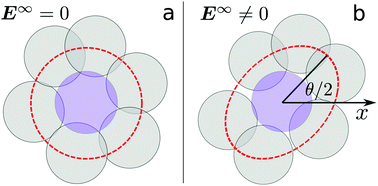Dynamics of microstructure anisotropy and rheology of soft jammed suspensions
Abstract
We explore the rheology predicted by a recently proposed constitutive model for jammed suspensions of soft elastic particles derived from particle-level dynamics [Cuny et al., Phys. Rev. Lett., 2021, 127, 218003]. Our model predicts that the orientation of the anisotropy of the microstructure, governed by an interplay between advection and contact elasticity, plays a key role at yielding and in flow. It generates normal stress differences contributing significantly to the yield criterion and Trouton ratio. It gives rise to non-trivial transients such as stress overshoots in step increases of shear rate, residual stresses after flow cessation and power-law decay of the shear rate in creep. Finally, it explains the collapse of storage modulus as measured in parallel superposition for a yielded suspension.



 Please wait while we load your content...
Please wait while we load your content...